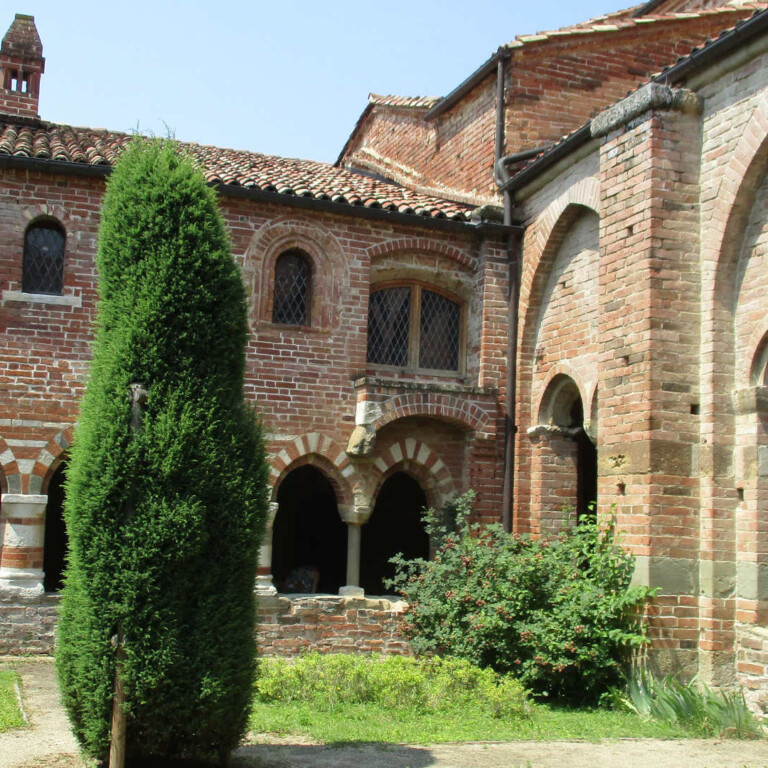The first document mentioning the church of Santa Maria di Vezzolano dates back to 1095, but the current building dates back to the late 12th century. The canonical complex of Vezzolano, often improperly called an abbey, housed religious monks who followed the rule of St Augustine. It enjoyed a long period of splendour between the 12th and 13th centuries, followed by a slow decline, which began in 1405, the year from which the canonry was granted in commendation to prelates resident elsewhere. After expropriation during the Napoleonic era, the complex was ceded to the State in 1937 and is currently in the hands of the Polo Museale del Piemonte.The church, with its east-facing apse, originally had a three-nave plan, which was modified in the 13th century when the right aisle was transformed into the north side of the cloister. The façade, with brickwork salients and horizontal sandstone bands, has a rich sculptural decoration. Inside is a pier (or jubè), decorated with a two-register polychrome bas-relief depicting the Dormitio Virginis and the Genealogy of Christ, dating back to the third decade of the 13th century; there is also a late 12th-century sculpture of the Annunciation on either side of the central window of the apse.In the cloister are sculpted capitals and an important cycle of frescoes dating from the mid-13th and 14th centuries, including those in the Rivalba chapel by the Master of Montiglio with the Adoration of the Magi and the Contrast of the Three Living and the Three Dead.The complex is part of an area rich in expressions of Piedmontese Romanesque architecture, ranging from the 10th to the 14th century, of which Vezzolano represents the constituent fulcrum of the RRC (Romanesque Hill Network) project, to which the municipalities of Albugnano (Santa Maria di Vezzolano and San Pietro) adhere, Andezeno (San Giorgio), Brusasco (San Pietro), Castelnuovo don Bosco (Sant'Eusebio), Cavagnolo (Santa Fede), Cerreto d'Asti (Sant'Andrea), Cortazzone (San Secondo), Marentino (Santa Maria), Mombello d'Asti (San Lorenzo), Montafia (San Giorgio and San Martino), Montiglio (San Lorenzo), Tonengo (San Michele).
Hours:
Additional information opening hours:
Monday: closed
Tuesday: closed
Wednesday: closed
Thursday: 10:00 - 18:00
Friday: 10:00 - 18:00
Saturday: 10:00 - 18:00
Sunday: 10:00 - 18:00
Additional information opening hours:
Tuesday and Wednesday open for groups by appointment only. Mondays closed
NB: Information may vary. Always check the museum website for up-to-date times and fees.
Do you have subscription?
Piedmont - Aosta Valley Card: included
Formula Extra card: included
Don't have a subscription?
- Full price ticket: Free
- Reduced ticket: Not available
You might also be interested in:

275museums
AM Piedmont Aosta Valley
A network of 245 museums in Piedmont and 30 in Aosta Valley forms the rich cultural offer developed
by these two regions.
by these two regions.

500museums
AM Formula Extra
One integrated pass to visit 500 cultural sites across Piedmont, Lombardy, and Aosta Valley.
Three regions, one card.
Three regions, one card.

255museums
AM Lombardy Aosta Valley
A network of 225 museums in Lombardy and 30 in Aosta Valley forms the rich cultural offer developed
by these two regions.
by these two regions.













